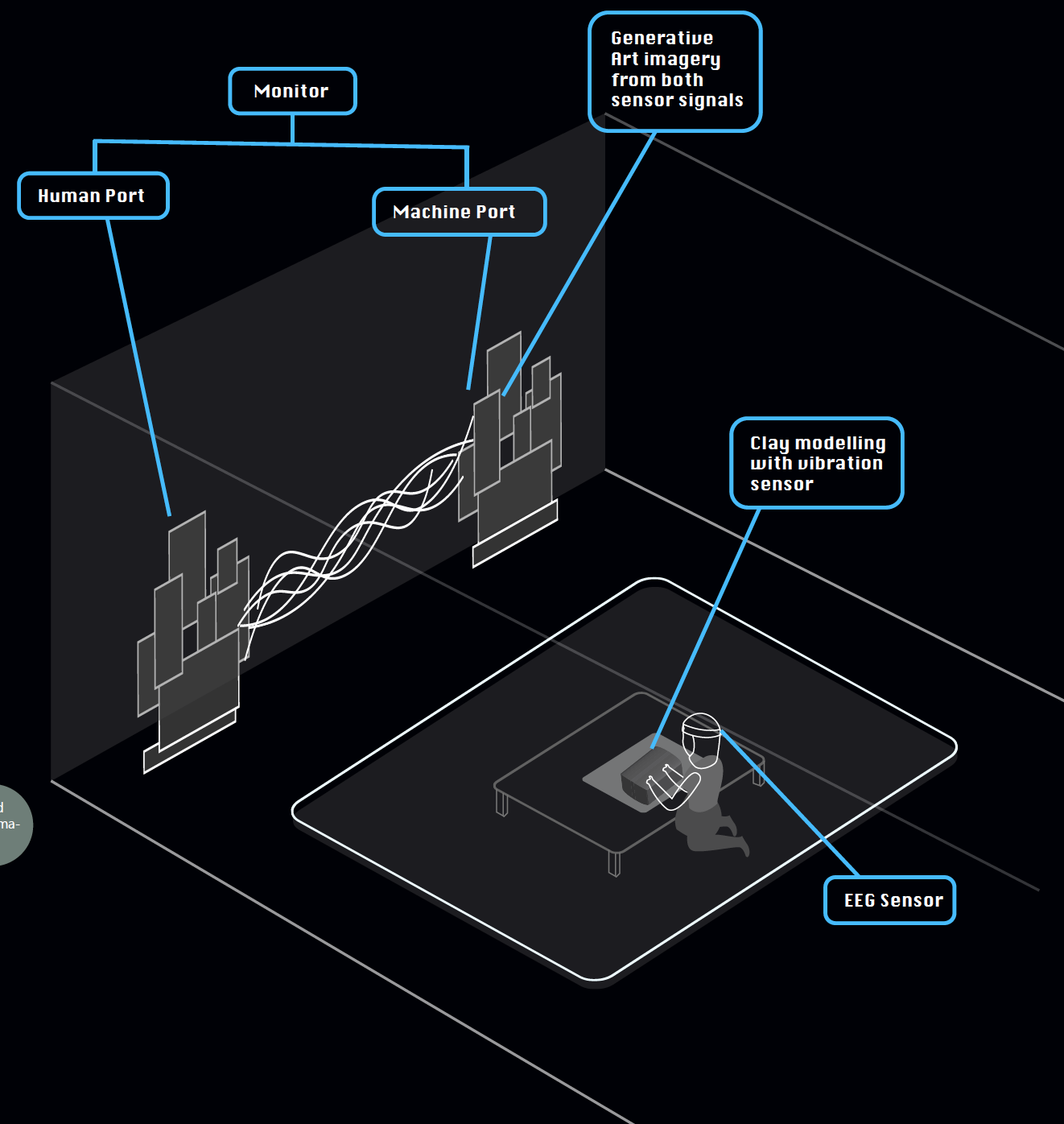Correlate You

Post-human Embodiment | Quantum Entanglement / 2019
The work explores the possibility for posthuman technologies to break the down the boundaries between humans and simulative life forms. After achieving singularity how will posthuman and simulative living forms inform one another? Employing research, experimentation and speculation this body of work speculates about a possible form of interaction by creating a simulation in the form of an interactive installation.
An Experience Roon of Mind Uploading Devices
Mechanism
The inspiration of interactive installation comes from the old clay creation myth. This project intends to create an experience room for simulating mind transfer teleservice in post-human era. The mechanism of uploading mind reflects the idea of quantum entanglement. People uploads their mind via computer to their simulative life form, which are generated and cannot be considered independently of the state of the others, even when people and their simulated form are seperated by physical and digital realm. The experience room creates an interactive space and applies recent technologies for imitating the conceptual mind transfer teleservice might be developed on the post-human scale. People enable to experience the mind updating from the synchronized graphic projection.




